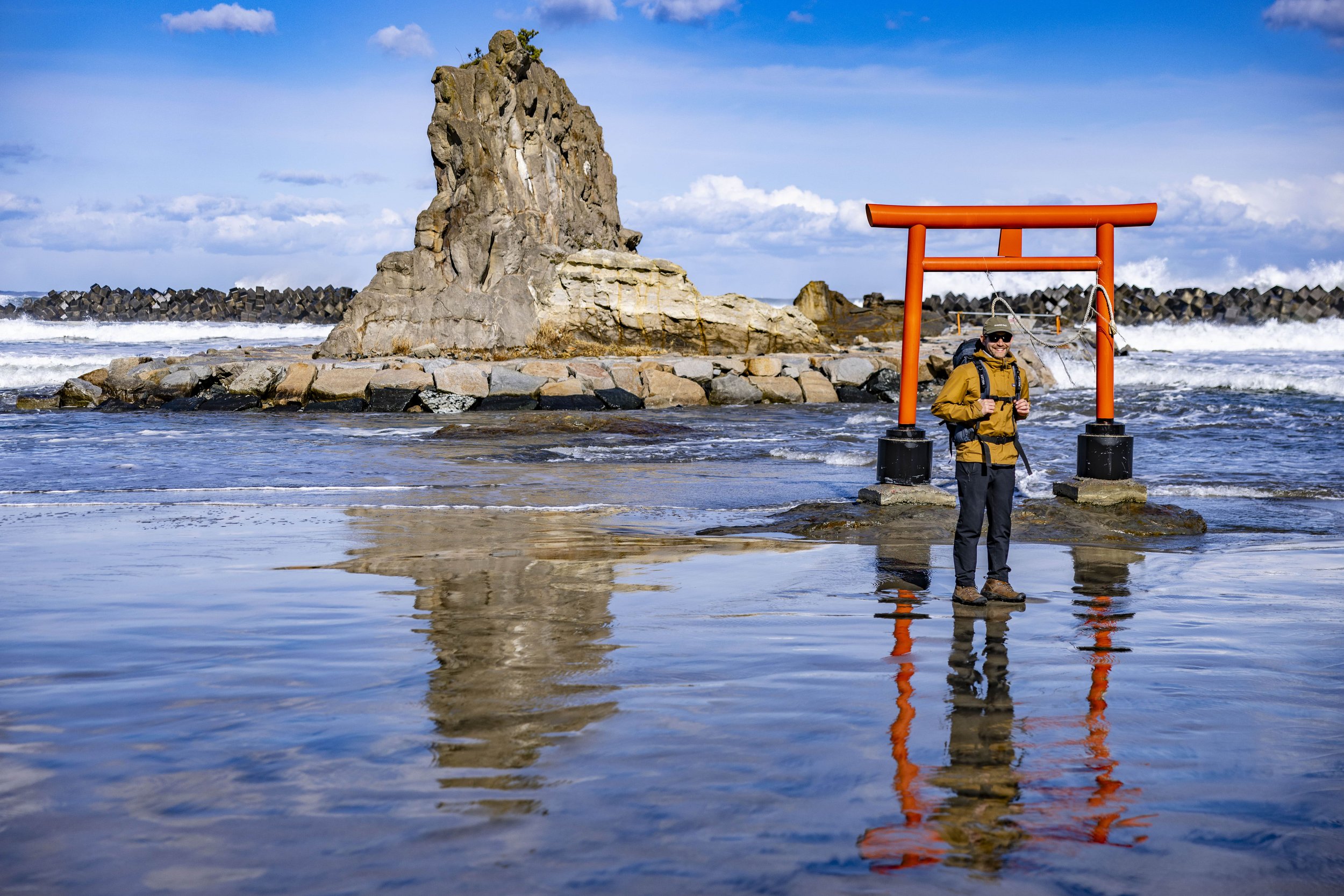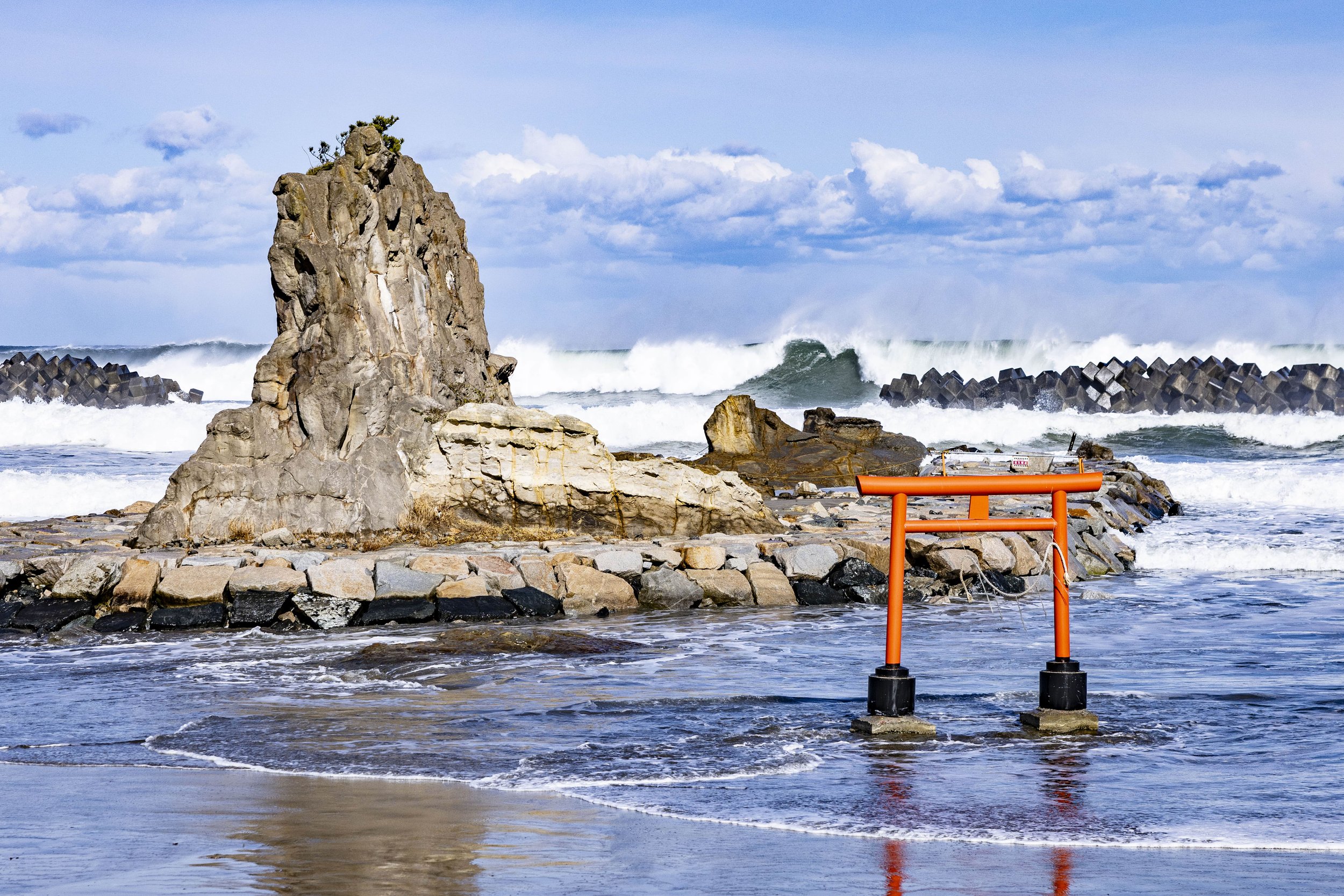The Fukushima Coastal Trail: A New 200km Trail Along Fukushima's Hamadori Coast
The Fukushima Coastal Trail’s southernmost point, Nakoso Beach.
Opened in September 2023, the Fukushima Coastal Trail (FCT) - known as the ふくしま浜街道トレイル or Fukushima Hamakaido Trail in Japanese - stretches more than 200 kilometres along Fukushima’s Hamadori coast.
From Shinchi in northern Fukushima to the southern border town of Iwaki, the trail offers views of the Pacific Ocean and the famous Abukuma mountain ranges, passing through memorial sites, farms, towns and seaside villages.
Perhaps most importantly, the trail provides a unique window into life in Fukushima and how the region is recovering over a decade after one of Japan’s most devastating disasters struck this quiet part of the country in the form of the 2011 Great East Japan Earthquake and Tsunami.
One exciting thing for hikers is that the FCT connects to the southern section of the Michinoku Coastal Trail. This means it is now possible to combine the Michinoku Coastal Trail (1,000+ kms) AND the Fukushima Coastal Trail (200 kms), for a full 1,200+km epic coastal adventure!
Similar to the Michinoku Coastal Trail, the government and local communities launched the FCT to boost sustainable tourism and support Fukushima’s post-disaster recovery. The trail is currently managed by the Michinoku Trail Club, the same organisation in charge of promoting and managing the Michinoku Coastal Trail.
If you’re keen to travel slowly and deepen your understanding of Fukushima’s past, present and future, this trail may well be for you.
Planning Your Route
The trail offers seven recommended routes ranging from 19 to 46 kilometres, allowing hikers to section hike depending on their availability, or thru-hike (it can be walked in approximately 7-8 days). Note that the vast majority of the FCT follows paved roads and is largely flat.
For more route information and maps, see the Fukushima Coastal Trail website (Japanese only).
Stickers along the Fukushima Coastal Trail showcase the FCT logo with distinct symbols: a wavy line representing the Abukuma Highlands, a straight line symbolising the trail itself, and a squiggly line depicting the Pacific Ocean.
Section: Iwaki to Nakoso
Starting from Iwaki station in the south of Fukushima, we walked along the coastline to the trail’s southernmost point in Nakoso.
Our first stop was Iwaki Lalamew, a large seaside facility housing a fish market, restaurants and other attractions. We wondered around the lively fish market observing the catch of the day, including Ise shrimps (Ise ebi) - a much-loved local delicacy that can grow up to 30 centimetres in length - as well as sea urchins (uni), abalones (awabi), and scallops (hotate). We then ducked into one of the adjacent restaurants, where we indulged in a large kaisendon (fresh seafood on rice bowl) - a perfect way to kick off the hike.
We followed local roads for a few hours, walking past factories, parks and coastal settlements before reaching Iwama beach, where surfers from across Japan gather to ride its impressive waves.
Along the coast stood an unusually shaped monument, known as “Kimito”. This egg-shaped time capsule is full of items gathered by residents after the 2011 tsunami to share with future generations, including newspaper clippings, videos and messages from survivors. There were also the remnants of a seawall nearby, reminding us of the power of the waves that struck this shoreline over a decade ago.
The trail then led us to Nakoso Karyoku Park, where we were fortunate to enjoy the Kawazu-zakura cherry blossoms, a sakura variety famous for flowering early, in full bloom.
After strolling along quiet country roads in Nakoso, we reached Nakoso Barrier (known as Nakoso no Seki), an ancient checkpoint or fortified barrier built during the Yamato period to defend against the Emishi people, an indigenous group in northern Japan. The name “Nakoso" means "do not come here", reflecting its purpose as a defensive structure, and the barrier was an important checkpoint marking the boundary between the Tohoku and Kanto regions.
The trail’s southern terminus is Nakoso Beach, a picturesque beach with a striking red torii gate that contrasts beautifully with the ocean backdrop, an idyllic spot to rest after a day’s hike. From there, it’s a 30 minute walk to Nakoso station, from where you can move to your next destination.
Much like the Michinoku Coastal Trail, the FCT has a lot to offer; fresh seafood, a chance to learn in-depth about resilience, rebuilding and hope, opportunities to meet local people and experience the region’s famed omotenashi (hospitality). It also offers a glimpse into a lesser-known region of Japan that has undergone tremendous change over the past decade.
While there may be fewer remote mountain routes and dirt tracks than its northern neighbour, the FCT certainly offers a unique experience and can be an option for both day hikes and thru-hikes alike. Additionally, for those looking for longer hikes (if 1,000 kms sounds too short for you!), the FCT can be an add-on after the Michinoku Coastal Trail, extending a few hundred kilometres further south along Tohoku’s coastline.
When to Go
The trail is walkable year-round, but spring (mid-March to May) or autumn (September to October) is recommended. In spring, visitors can enjoy the cherry blossoms and the weather is typically mild, with temperatures ranging from 5°C to 22°C. The autumn offers comfortable temperatures between 10°C and 25°C, although it is important to keep an eye out for typhoons during this period! Summer in Fukushima is hot and humid, while winter can be cold and even snowy in some parts.
Getting There and Around
Iwaki station is around 2.5 hours away from Tokyo station by bullet train (Hitachi No.25). The JR Joban line runs along Fukushima’s coast, providing a convenient option for those looking to hike sections or hop between different parts of the trail.
For more information: See the Fukushima Coastal Trail website (Japanese only)













